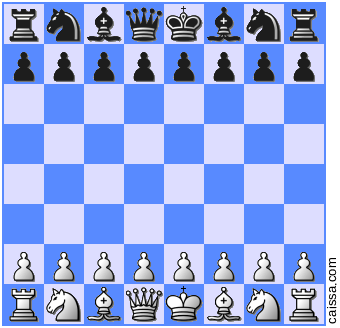I've found myself to be a big fan of the English Opening. I like having that pawn anchor on c4 and the flexibility the system provides. I played a game the other night and it transposed into a Catalan Opening. (I'm not sure if it specifically is that opening, but the setup for me, as white, was the same). I was pleased to see that it opened up that way. The Catalan was an opening that I've been interested in. I don't know what it is exactly, but something with the setup intuitively appeals to me.
1. c4 Nf6
2. g3 Nc6
3. d4 e6
I started with the English Opening, preparing the kingside fianchetto, but noticed with black's second move, I could make a bid for some center space by playing d4.
4. Bg2 d5
5. Nf3 Bb4+
6. Nc3 Bxc3+
7. bxc3 O-O
I completed my setup and black brought out his bishop, forcing my knight into a pin. Looking back, I should have seen it coming and perhaps have played an early a3 to keep the bishop away, instead of exchanging and doubling my pawns.
8. Ba3 Ne4
9. Bxf8 Qxf8
10. Qc1 dxc4
Fortunately, it left a line open for my bishop to spear his rook. I suspect he must have missed seeing that. I then bumped my queen over to avoid his knight forking her and the rook. My king could have taken the knight, but castling rights would have been lost.
11. O-O b5
12. Ne5 Nxe5
13. Bxe4 Rb8
14. dxe5 Qc5
I then castled and set my knight up to lure his off the diagonal of my bishop. He obliged and took my knight with his, which allowed me to take his other knight, forcing him to move his rook out of jeopardy and allowing me to take his other knight with my pawn.
15. Rd1 Ba6
16. Qf4 Qe7
17. Rab1 Qa3
I then took command of the open and semi-open files with my rook, and slid my queen over to help protect my center which was hanging. I'm not sure what he was up to... he stuck his bishop behind a pawn, and lost some time with jogging his queen.
18. Rd7 Rf8
19. Rxc7 Qa5
20. Rxa7 Qb6
This allowed me to lift up my rook to the 7th rank and start busting up pawns. It's often said that a rook on the 7th can be deadly, and two on the 7th is usually deciding.
21. Qh4 h6
22. Qe7 Bc8
He had been bringing his pieces back to try and regroup to get my rook out of there. I slid my queen over to the h-file to have two attacks (queen and bishop) on his h-pawn. He noticed my plan and moved his pawn, but I was able to sneak my queen up to the 7th as well.
23. a4 Ba6
24. axb5 Bc8
25. Bg6 Qd8
26. Bxf7+ Kh8
I was able to bring my bishop around to have three pieces, all attacking the f-pawn which was protected only by a rook and his king. He had all of his pieces on defense, but being a full rook behind was severely disadvantaged.
27. b6 h5
28. Qxd8 Rxd8
29. b7 Bxb7
30. Rbxb7 Rf8
I traded queens - being up in material it puts the material ratio in my favour. I was also able to lure his bishop to be taken by my rook by threatening pawn promotion.
31. Bxe6 Re8
32. Bxc4
At this point I had a bishop and two rooks to his one, and a few more pawns. He tried to chase my bishop and I just kept dodging by taking his remaining pawns. At this point, black resigned.
I think I found what it was that was appealing to me about this position. It reminds me of a boxer... ready to deliver a devastating 1-2 combo!

No comments:
Post a Comment